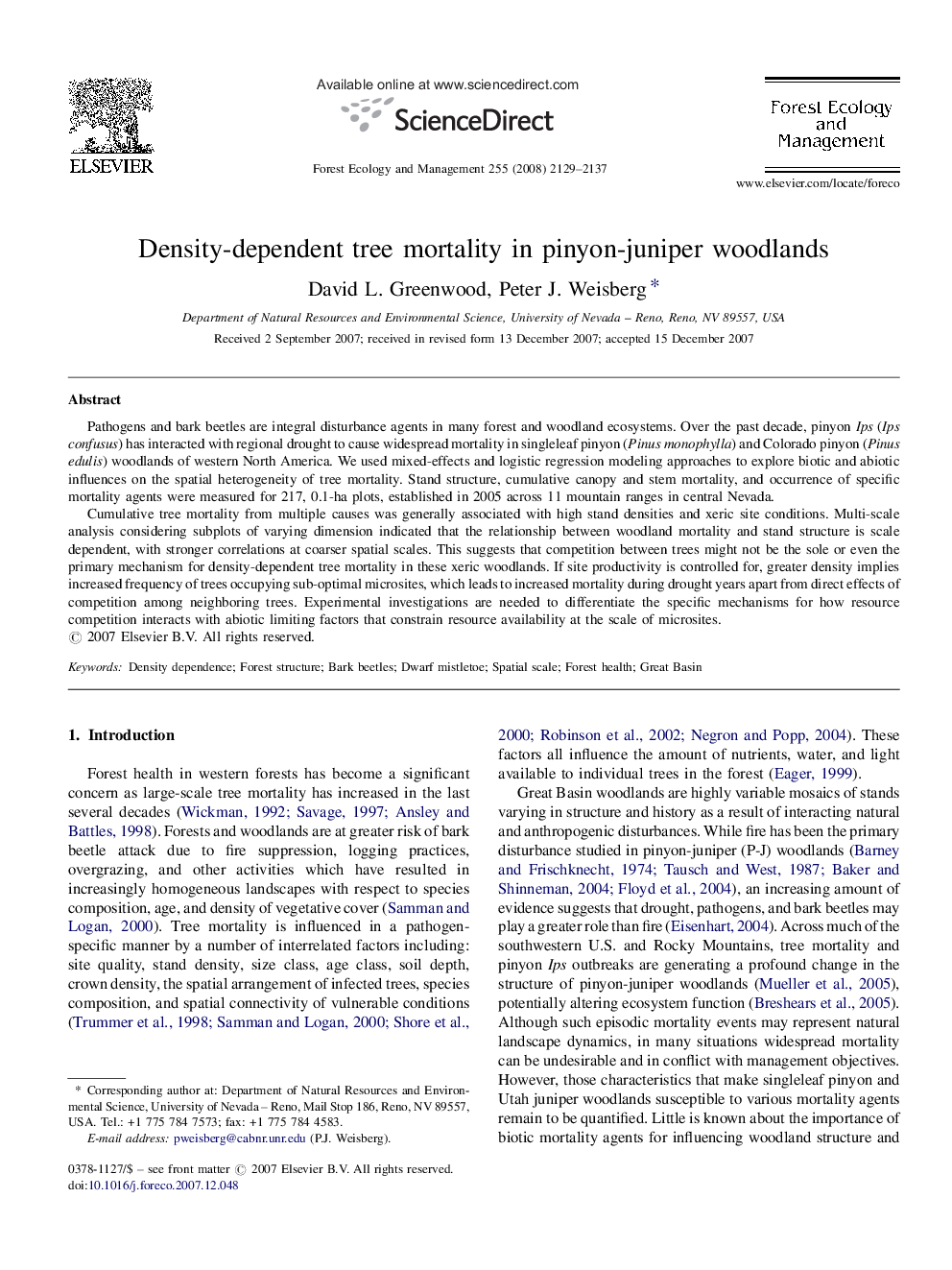| Article ID | Journal | Published Year | Pages | File Type |
|---|---|---|---|---|
| 89352 | Forest Ecology and Management | 2008 | 9 Pages |
Pathogens and bark beetles are integral disturbance agents in many forest and woodland ecosystems. Over the past decade, pinyon Ips (Ips confusus) has interacted with regional drought to cause widespread mortality in singleleaf pinyon (Pinus monophylla) and Colorado pinyon (Pinus edulis) woodlands of western North America. We used mixed-effects and logistic regression modeling approaches to explore biotic and abiotic influences on the spatial heterogeneity of tree mortality. Stand structure, cumulative canopy and stem mortality, and occurrence of specific mortality agents were measured for 217, 0.1-ha plots, established in 2005 across 11 mountain ranges in central Nevada.Cumulative tree mortality from multiple causes was generally associated with high stand densities and xeric site conditions. Multi-scale analysis considering subplots of varying dimension indicated that the relationship between woodland mortality and stand structure is scale dependent, with stronger correlations at coarser spatial scales. This suggests that competition between trees might not be the sole or even the primary mechanism for density-dependent tree mortality in these xeric woodlands. If site productivity is controlled for, greater density implies increased frequency of trees occupying sub-optimal microsites, which leads to increased mortality during drought years apart from direct effects of competition among neighboring trees. Experimental investigations are needed to differentiate the specific mechanisms for how resource competition interacts with abiotic limiting factors that constrain resource availability at the scale of microsites.
